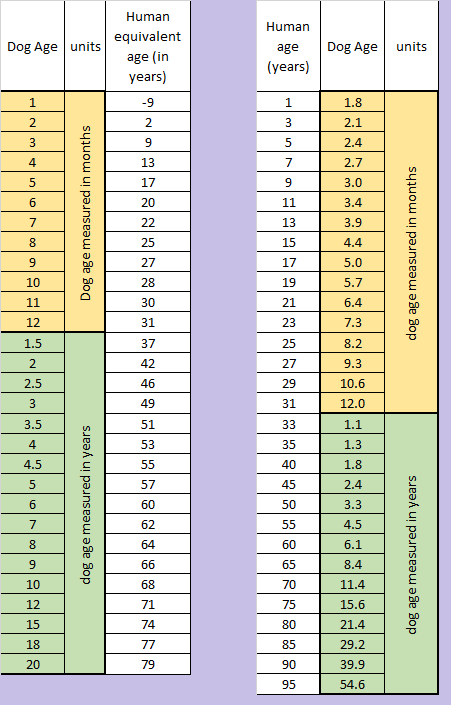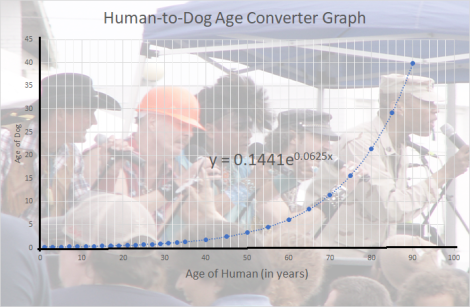Or should I say a natural logarithm…
Some scientists studying mammalian genetics and methylation have concluded that it’s simply incorrect to multiply the actual age of a dog by seven to arrive at its human age: the relationship is not linear at all. Dogs mature much faster than humans, being fully able to have puppies of their own when they are one or two — which shows that the seven-to-one rule makes little sense there, even though that simple linear formula does more-or-less work when considering total life expectancies of us humans and our best friends.
They arrived at their conclusions, which were reported in Science, by drawing blood samples from over a hundred Labrador retrievers and comparing variations in markers on the DNA genomes thereof. I present a graph from the Arxiv preprint here, comparing a Labrador retriever with a well-known actor:

One of the formulas they came up with is the following

which simply means that you take the natural logarithm (the one with base e, or about 2.718, which you may have studied in high school or college math classes, and which the calculator you have on your cell phone can do for you) of the dog’s age (D), multiply that by 16, and then add 31, to get the human age (D). That’s just about impossible to do in your head, so the Science writer provided a little calculator, which they warn is only valid for dog ages of 1 year or more.
I decided to play with the formula and make some tables so you can compare more easily a theoretical dog age to a theoretical human age, and decide for yourself if you think the study makes sense. I also calculated the inverse function (to go from human years to dog years directly, and got the following:

Here they are:

Keep in mind that in the yellow part, the dog’s age is measured in months. (Yeah, I disregarded the warning about only using dogs aged 1 year or more!) And in the green part, a dog’s age is measured in years. Obviously, a one-month old puppy is not equivalent to a human baby that will only be born nine years in the future, but a lot of the rest does make sense.
Here is a pretty graph I made from the table on the left:

And from the one on the right:

Sharp eyed folks may have noticed that the equations produced by Excel don’t look like the ones I wrote. In the first case, the difference just comes from rounding. If you remember the rules of exponentiation, you may be able to figure out why mine looks almost completely different from the one Excel produced!
I arrived accidentally to this post by searching on the web. Absolutely beautiful and explanatory graph of Tom Hanks and doggos.
thank you!
LikeLike